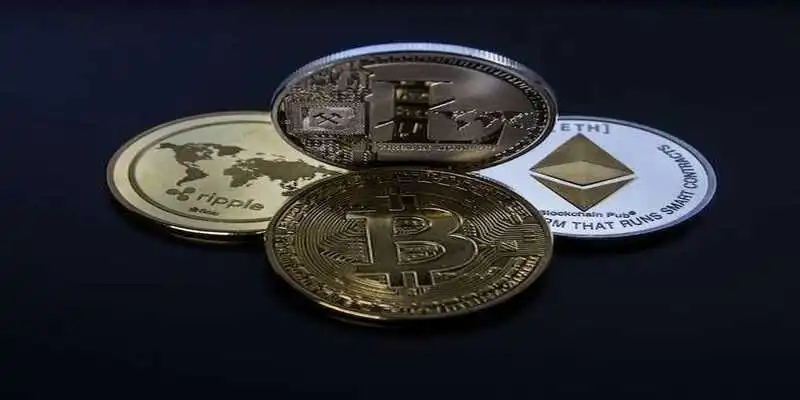4 Factors That Will Affect a Cryptocurrency's Recovery
Cryptocurrency's value frequently drops before stumbling back up a short time later. The rise in cryptocurrency prices gives investors hope to reap attractive returns again. We've spoken about key elements to determine a currency's potential to rise over its lowest point and reach all-time highs.

The cryptocurrency market is notorious for its precarity. In this highly speculative landscape, it’s typical for crypto to dip in value one day and then stagger up again after a short period. Once the bearish cycle, or period of overall decline ends, positive trends will follow along with renewed investor confidence.
That said, the first half of 2022 experienced a so-called “crypto winter” characterized by drastic crashes in famous currencies like Bitcoin as well as stable coins such as Terra or Tether. With this, investors are faced with the decision to prevent major losses or wait for another recovery rally.
Still, we shouldn’t give in to a negative outlook on recovery. There is some improvement in the prices of cryptocurrencies such as Ethereum, Bitcoin, and Tether that may give investors hope of once again reaping attractive returns. In this article, we’ll be discussing some of the important factors that may dictate a cryptocurrency’s capacity to move past rock bottom and return to all-time highs.
4 Factors That Will Affect a Cryptocurrency's Recovery
User Interest
Despite the noticeable lows of the current crypto landscape, the general public still shows a strong investment appetite. Along with new cryptocurrencies being launched regularly, there is still a sizable community for transactions via non-fungible tokens (NFTs). That said, the age-old economic principle of supply and demand also applies to crypto, with market capitalization playing a big role in determining economic performance. As with any currency, crypto prices rise as demand increases with limited supply. As such, prices may rise dramatically with broader acceptance and increased use of crypto for transactions.
One thing to consider when measuring user interest in crypto is node count. In a nutshell, node count visualizes the number of active crypto wallets in a blockchain network. A high number of active wallets means that a cryptocurrency has a strong chance of weathering volatility.
To sustain or increase node count, one may look towards amping up crypto hype among social media figureheads and financial institutions. For one, new investors may want to get into the trade once they are aware of asset protection tools that use enhanced encryption techniques to secure crypto, such as a specialized <ahref="https://www.xmrwallet.com/">XMR wallet when dealing with Monero. These tools can strengthen user trust and encourage investors to look into the market as an alternative medium of transaction as well as a valuable addition to their investment portfolio.
Inflation and Interest Rates
It came as no surprise that high inflation has gripped nations over the past year, with factors such as the pandemic and geopolitical turmoil affecting the state of the global economy. With this in mind, it should be noted that inflation at the national and global levels also has far-reaching impacts on the crypto landscape.
To help curb inflation, governing bodies may look into increasing interest rates. However, high interest rates could lead to a decline in demand for crypto as investors opt for debt- or interest-based securities instead. As such, seasoned crypto investors pay close attention to the decisions of entities like the US Federal Reserve on interest rate hikes to inform their investment decisions.
Crypto investors also look to Consumer Price Index (CPI) data to monitor potential market trends. CPI is used to provide insight into the price of goods and the degree of inflation, which in turn affects the purchasing power of residents. To put it simply, high CPI means there is high inflation. Although the US recorded a high CPI of around 9.1 percent last June, some experts are optimistic that global inflation will wane through next year and return to pre-pandemic levels. With this outlook, investors may regain confidence and look forward to a long bullish period.
Regulatory Control
Those familiar with the crypto landscape know that the mainstream penetration of cryptocurrencies gains the attention of regulatory bodies. The decentralized nature of the crypto market tends to spur government actions such as the imposing of taxes and contracts to stabilize volatile pricing. Regulations that are too stringent may drive down investor interest, while favorable regulations may entice more newcomers.
In addition, internal governance has a part in driving the recovery of a cryptocurrency. For instance, some crypto networks give holders more agency in the usage and mining of assets. As such, experts believe that crypto stakeholders must agree on their guidelines and protocols to stabilize pricing and prevent oversupply, which could diminish a cryptocurrency’s value.
Market Competition and Partnerships
To date, there are over 13,000 cryptocurrencies with hundreds more being launched each day. Of all these cryptocurrencies, some may fail to establish a solid network. Eventually, these cryptocurrencies become less viable and die out. Alternatively, there are new entrants that could easily gain momentum, build a good network, and drive down the value of competitors. That said, new cryptocurrencies need to be listed on various exchanges to increase visibility, demand, and value.
Currently, partnerships are being made to strengthen the position of the crypto market. These include efforts to improve network scalability to increase the usability of crypto for a range of commercial activities. There are also initiatives to apply cryptocurrencies to savings and retirement plans as well as private trusts. As stakeholders enter into more partnerships to encourage the ubiquity of crypto, we may see cryptocurrencies regain momentum and stay on track toward a better market trajectory.
Slow But Sure Paths to Recovery
As with any investment landscape, the crypto market is not a space for “get rich quick” schemes. As an extremely volatile market, crypto is bound to experience significant highs and lows driven by the state of the global economy. Still, we shouldn't discount the fact that crypto interest will not be going away soon. Moreover, we should consider the existence of inflation-curbing initiatives as well as internal efforts to establish crypto networks as legitimate, reliable, and convenient financial channels. So while there are times when crypto faces some setbacks, it’s safe to say that the road to former glory is often slow and multifaceted yet rewarding in the long run.


